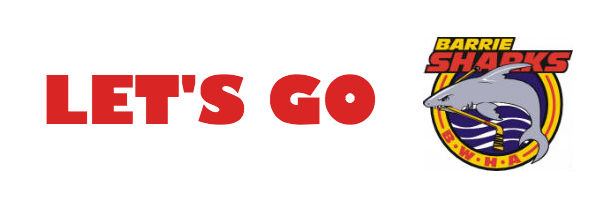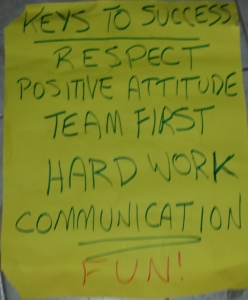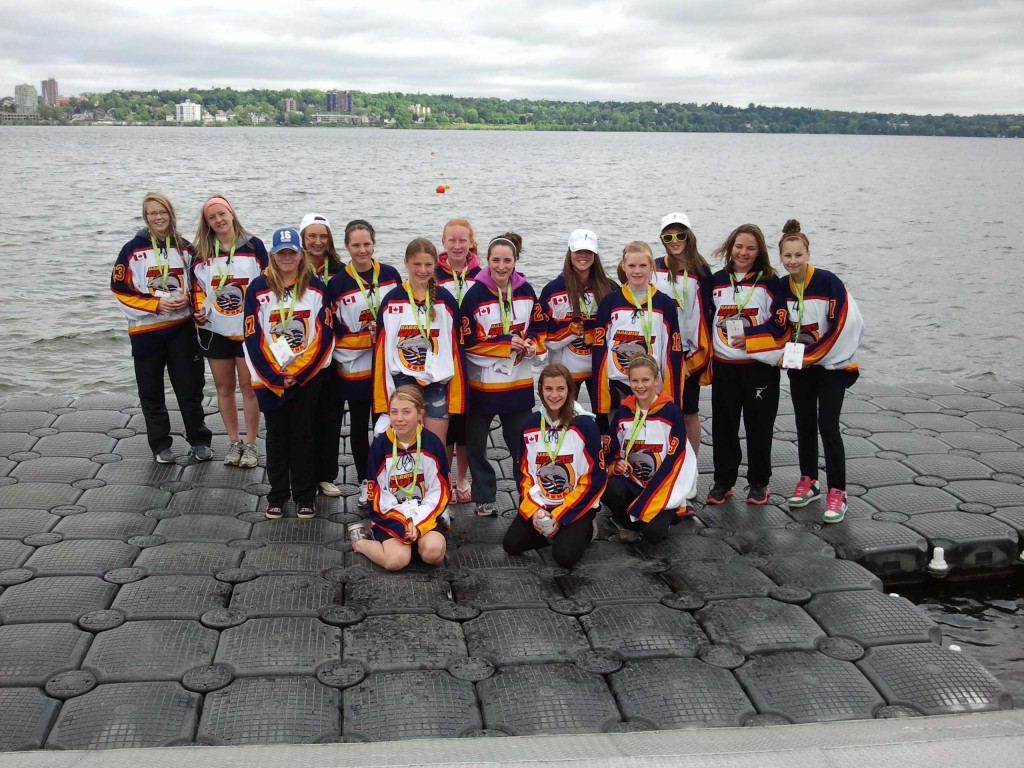I knew I would have a hectic and most likely nerve-wracking rookie coach tryout week. It was all that and then some as the past couple of days threw me a couple of curves I definitely wasn’t expecting. As anticipated, my tryouts started with a healthy group of 45 skaters and four goalies, that would have to be pared down to 15 and 2. Three sessions immediately did not seem like enough, but that is what we were given and that is what we would use to the best of our abilities.
With only the three skates, it would be necessary to release a fairly large number of hopefuls right after the first 90 minute review. So my evaluators and I endeavoured to identify 15 players who we felt just weren’t presently at the appropriate level. I put implicit trust in the five individuals I asked to help me evaluate prospects. Two others would complement these initial five as the process went on. I wanted to be sure I had a good variety of experienced-based opinion as I held the fate of these 12 and 13 year olds in my hands.
Before each skate I ventured in to the dressing room to provide my version of a pre-tryout pep talk. I started each by asking, “Who’s nervous?”, which prompted a few hands to slowly rise. I follow that with “Oh good, I’m not the only one.” There was no falsehood in that statement. Then I said some other stuff about skating hard and shooting harder, which I am sure fell on deaf ears for most. The Devil couldn’t recount much when I asked her what I said.
I was very pleased following the first skate to find out that my evaluators and I were pretty much bang on in our independent assessments of the talent on the ice. 45 was reduced to 30 for tryout #2.
However, the end of the first evaluation provided my first real challenge as I identified an out-of-town goaltender as a leading candidate for one of the two spots I had available at that position. Being out-of-town and possibly considering other options, I decided to approach this player and ask if I could offer her a spot on my team immediately. I and my evaluators had seen enough in one session to know she was the #1 or 2 keeper on the ice. Unfortunately, my offer of a position was turned down as this player was indeed exploring other options in other hockey centres. I would find out two days later that these options would pan out for her. I was now evaluating only three goaltenders to fill two positions.
The evaluation process became a little simpler with only 30 players to look at, but the level of difficulty from a decision perspective grew exponentially. The differences between players in this smaller sample size were likewise smaller. At the end of the second 60 minutes I looked to my evaluators for their assessments. This time we were not at the same level of agreement. They had identified a couple of surprise contenders for positions, who I had not previously considered. They also tagged a couple of players for release who I had hoped would shine a little brighter. It was time to consider releasing players I, and more importantly the Devil, had closer ties to. We spent a fair bit of time post-skate discussing the pros and cons of each player in question. In the end, I again ultimately went with the objective advice of my selection team. These were the first set of releases I knew I would dread. In the first two rounds, releases simply take the form of players’ numbers not appearing on a posted list of returning players. I double checked my list, pasted it to the rink glass and hustled out of the arena so as not to have to witness the veritable carnage I was about to create. Cue the first of a few sleepless nights in a row.
I decided to take to the ice with the players for the third and final skate in order to get a sense of their on-ice personalities in addition to their hockey skills; particularly of those with whom I’d had no previous experience. A much different, if not more valuable, perspective than what you get up in the stands. By the last skate, we were down to only having to release a few at forward and defence along with one goalie. Another real tough set of releases were waiting on the horizon. The final selections and releases are handled via letters given to each player in sealed envelopes with explicit instructions to not read them until they have reached their vehicles; away from each others’ curious eyes. The goal is to lessen, as much as possible, any sort of public humiliation for those being released. But, of course, the brutal truth forces itself out in relatively short order; if not in the parking lot against instructions then on Facebook within the hour.
My post-tryout plan included a brief team meeting to provide congratulations to those who’s efforts were rewarded with a position on the team, to relate some of my immediate plans and to cover a few administrative details. For most of those in attendance, yours truly excluded, the nervousness of the past week subsided. I was surrounded by a group of visibly relieved players and parents.
I, on the other hand, still harboured some jitters fueled by the fact that I had made some difficult releases. I received news from a father that one such release did not make it beyond the parking lot. She had, in fact, broken down upon learning her fate, prompting two of the players I’d chosen sto forego my team meeting in favour of to consoling her. In fairness, she had played at this level last season with these two players, but I was unable to grant her the same in light of the evaluations of others on the ice over the past three sessions. I and my team felt there were other more appropriate choices based on our honest assessment.
After the team meeting, which did not conclude until well after 10pm on a Thursday evening, I did finally exhale, confident in my selections; at peace with my decisions, tough as some may have been.
Fast forward less than 24 hours to a bizarre turn of events. I received a call on my mobile phone from the previous evening’s news-bearing father who was now calling to tell me that his daughter, who I offered a position on my team, had somehow managed to be counter-offered and accepted a position on another team in another centre. I was flabbergasted. How had his daughter even auditioned for this other team as I understood that their tryouts had concluded over a week before. I was driving a the time so I pulled over to process what had just occurred. The phone rang again. The call display announced that the father of the other consoler from the night before was on the line. I simply answered “Let me guess? Your daughter has accepted an offer to play in another centre?” He confirmed this to be the case. I had apparently chosen two players who auditioned with no real desire to play on my team. I don’t think I’m out of line to ask aloud — Who does that?
I was suddenly, quite inexplicably, short two players. I immediately called my association rep for advice, though I knew what had to be done. I would need to scramble as the tryouts for the team directly below me were scheduled to start in three hours. I had to decide on and locate two players who I had released. I must then find these players before they stepped on the ice for the next round. I also had to inform the coach of that team that I would be taking back two of the players he thought would be vying for positions on his squad – players he was no doubt looking forward to securing as they were among my last releases.
I was able to find one of the players in time, but not the other. My only course of action was to physically attend the next tryout – to go to a rink where a whole group of players whom I’d just released, and their parents, would no doubt be thrilled to see me. My other chosen player was at the rink. In fact, she was in the dressing room getting ready for her next tryout. I spoke with her father to see if he thought she might be willing to accept my decision – my necessity – to revoke her release. I was pleased, and I believe fortunate, that both players I re-approached were thrilled to have been given another opportunity to play with and for me.
Quite a turn of events to arrive at a team of 17 players who I now believe all do want to play together on this team. And that will be key to the success of this group as with any team. I told the girls who did attend my first team meeting that, I have, at this point, only selected a bunch of talented individual players. Our combined job now is to become a team in the true sense of the word. That’s what we’ll begin working on when we get together in a couple of weeks; after all of the stress and turmoil of tryouts has fully subsided.
I sure did find out why some coaches say this is the worst week of the year; though I submit that mine was a little more difficult than it needed to be. The story of the players who decided to jump ship in the final hour has yet to play out in full. There are rules that appear to have been circumvented. I will leave that for authorities to sort out.
However, on the face of it, I don’t believe the hockey gods will approve of the way the whole scenario unfolded. I, as a hockey dad, certainly wouldn’t set an example for my kids based on deception and dishonour. Hockey after all is supposed to be a game based on honour and respect. That’s what I want to convey to my players and my kids. In that regard, I was proud of the Devil who competed hard throughout the evaluations to make sure no one questioned the fact that I was given the privilege of coaching a team. She made sure she belonged there. In doing so, she at least made that part of my rookie experience this week a little easier.
#imahockeydad
 We’re just a few practices into a new season of girls midget hockey and my initial trepidation at having to work with a group of relatively unknown players has surprisingly turned to cautious optimism. My concern at having a young team with half of the players in their rookie midget year has been replaced by enthusiasm driven by their enthusiasm. Last year I was lucky to have two girls ready to go on the ice when the Zamboni was done making its rounds, while so far the entire squad has been standing by expectantly as the big doors close signalling their permission to begin their skate. In seasons prior, it was not uncommon to be asked at least four times during a practice when it would be over. Through four practices thus far, the topic has only been raised once.
We’re just a few practices into a new season of girls midget hockey and my initial trepidation at having to work with a group of relatively unknown players has surprisingly turned to cautious optimism. My concern at having a young team with half of the players in their rookie midget year has been replaced by enthusiasm driven by their enthusiasm. Last year I was lucky to have two girls ready to go on the ice when the Zamboni was done making its rounds, while so far the entire squad has been standing by expectantly as the big doors close signalling their permission to begin their skate. In seasons prior, it was not uncommon to be asked at least four times during a practice when it would be over. Through four practices thus far, the topic has only been raised once. Perennial challenge number two; just make sure everyone gets along, which can be a task in and of itself when you’re talking about 17 teen-aged girls. Again, in early days and from what I can tell, the group is already getting along. I’m sure there will be a few who take extra time to get into the fold, but all seem willing. I was pleased to see and hear several agree with my annual rundown of “Keys To Success” emblazoned on a bright yellow bristol board, which has come to be something of a calling card for me. I told them I like signs because they provide good, quick reminders of what we want to do as a team and why. This particular sign will be posted in our dressing room for the next couple of weeks to help reinforce the tone. Maybe some girls think it’s all a little contrived and hokey, but if I can get the key messages across to a few then mission accomplished.
Perennial challenge number two; just make sure everyone gets along, which can be a task in and of itself when you’re talking about 17 teen-aged girls. Again, in early days and from what I can tell, the group is already getting along. I’m sure there will be a few who take extra time to get into the fold, but all seem willing. I was pleased to see and hear several agree with my annual rundown of “Keys To Success” emblazoned on a bright yellow bristol board, which has come to be something of a calling card for me. I told them I like signs because they provide good, quick reminders of what we want to do as a team and why. This particular sign will be posted in our dressing room for the next couple of weeks to help reinforce the tone. Maybe some girls think it’s all a little contrived and hokey, but if I can get the key messages across to a few then mission accomplished.
